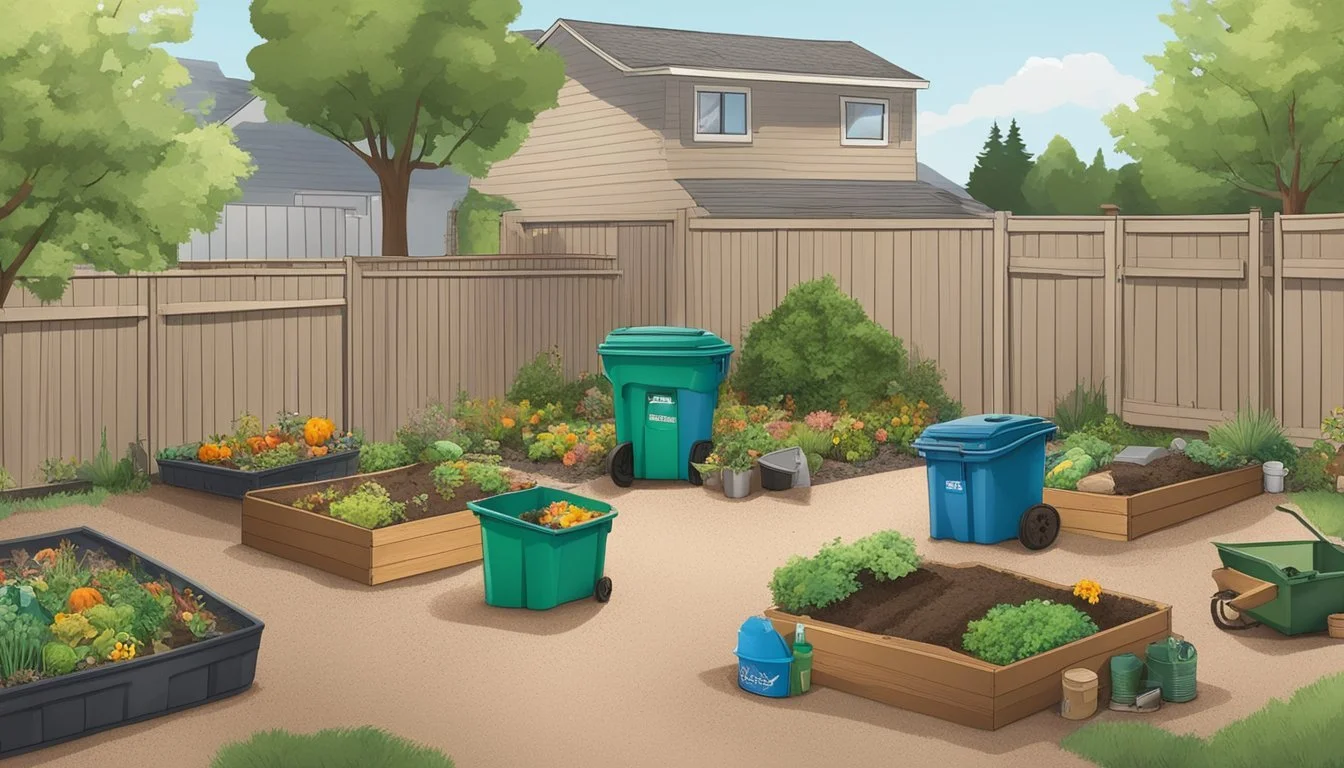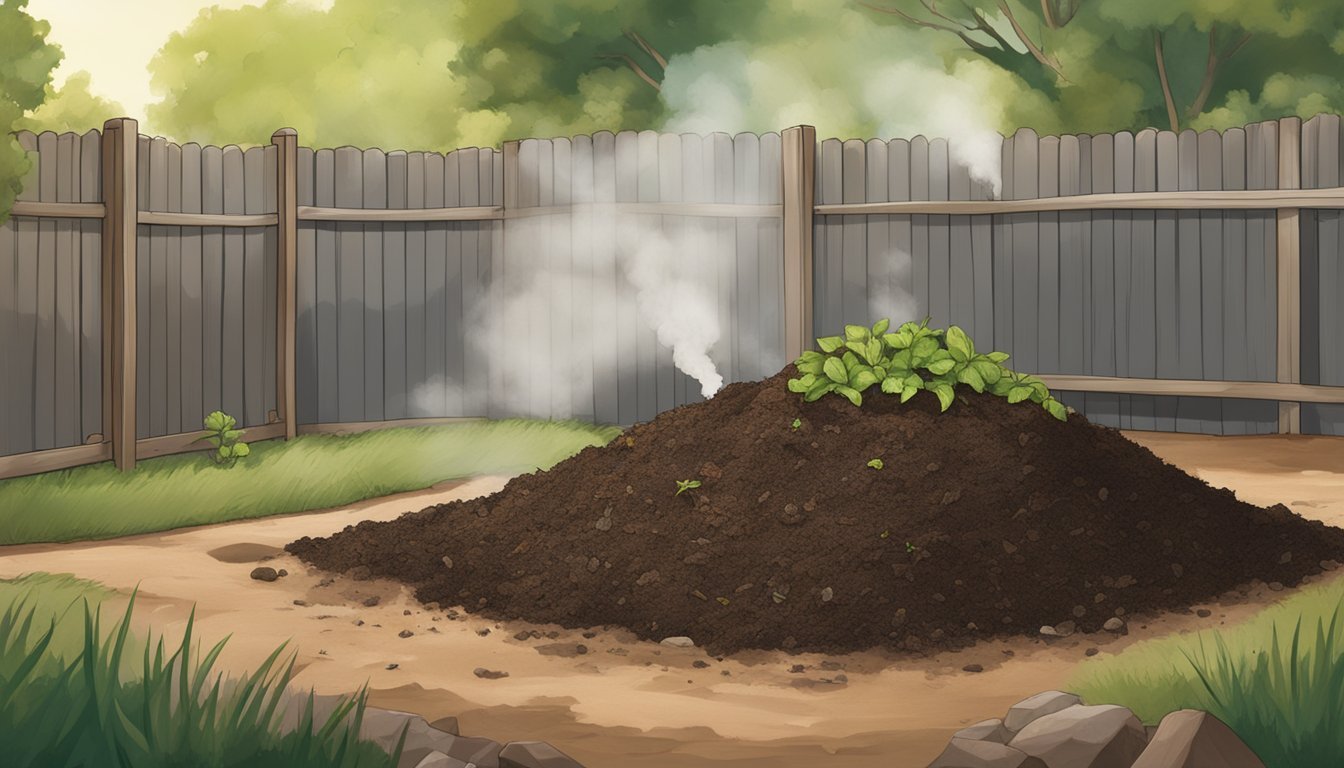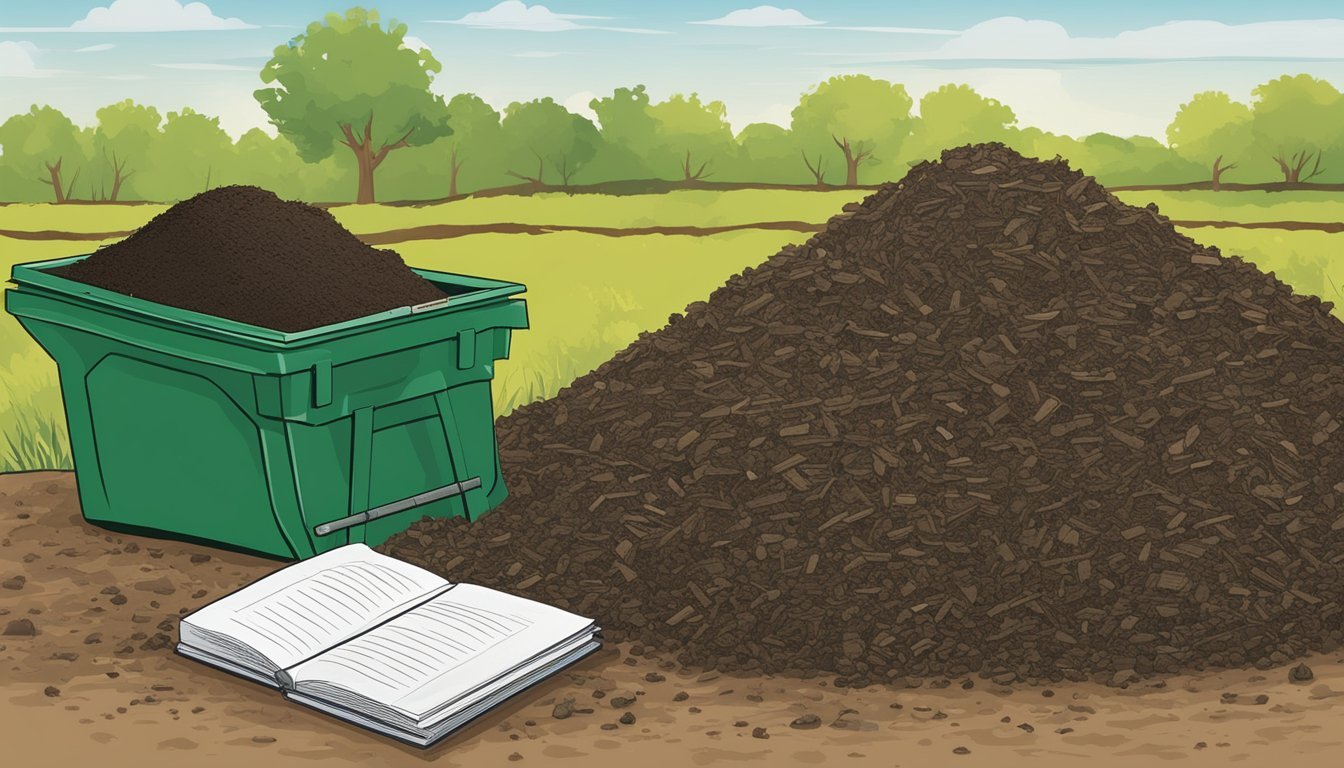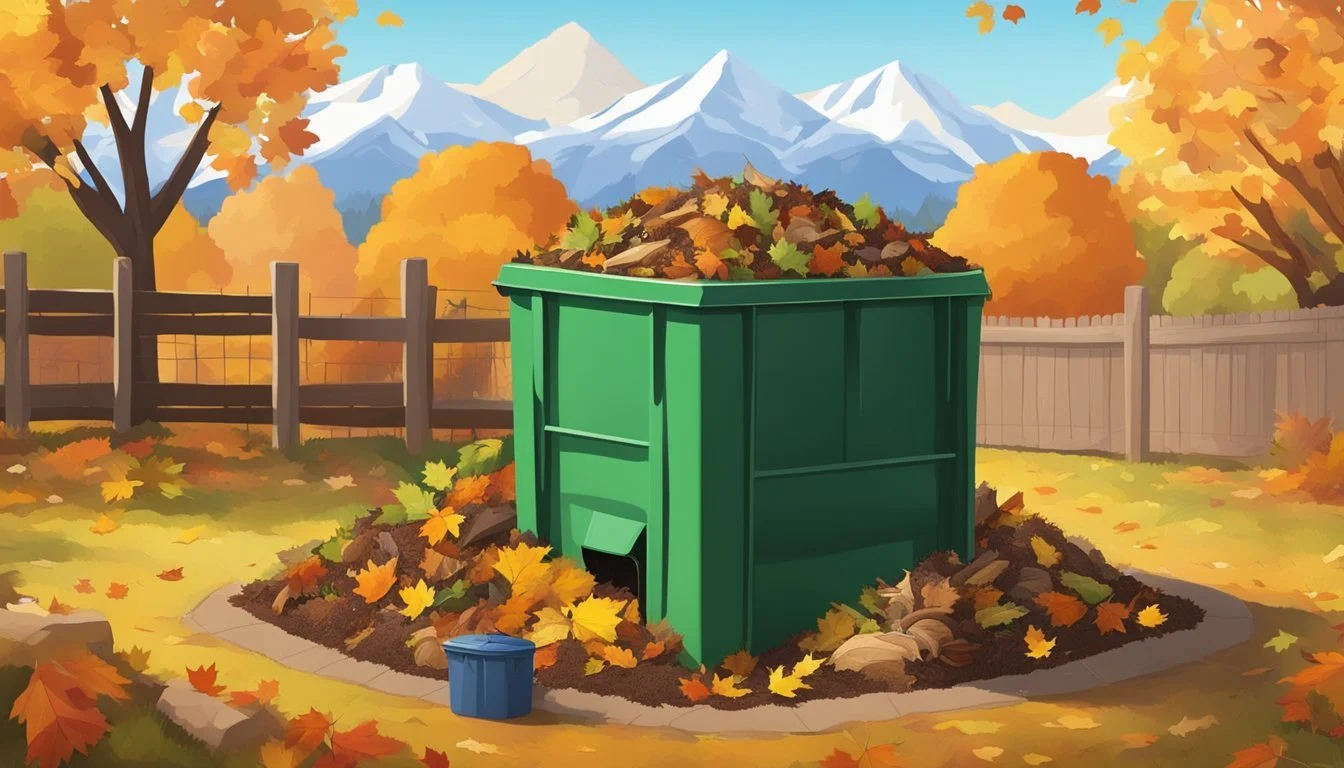Guide to Composting in Greeley, CO
Essential Tips for a Green Lifestyle
Composting is a valuable practice for residents of Greeley, Colorado, offering both environmental benefits and practical advantages for gardeners and homeowners. By converting organic waste into nutrient-rich soil, composting not only reduces the amount of trash sent to landfills but also provides a natural alternative to chemical fertilizers, promoting healthier plant growth. In Greeley, approximately 24% of an individual's annual waste can be composted, significantly lowering their environmental footprint.
The city of Greeley, in partnership with Weld County, has taken measures to encourage composting among its community members. The initiative includes providing resources and guidelines to assist residents in starting their backyard composting projects. Reduced water usage is another benefit, as soil amended with compost can require up to 30% less water, which is of particular importance in the semi-arid climate of Northern Colorado.
Composting options in Greeley are flexible, accommodating various living arrangements from single-family homes to apartment complexes. While outdoor composting is often recommended, residents can choose a system that suits their particular space and lifestyle needs, whether it's a homemade or store-bought container placed in the yard, patio, garage, or even under the kitchen sink. This adaptability makes composting an attainable goal for all Greeley residents who are eager to contribute positively to their environment.
Understanding Composting Basics
Composting is a sustainable practice that transforms organic material into a valuable soil amendment. It is a blend of science and simplicity, redefining waste management and gardening.
Composting Benefits
Composting offers multiple environmental and agricultural advantages. Organic material like leaves, grass clippings, and vegetable scraps undergo decomposition, converting them into compost that enriches the soil with essential nutrients. This process minimizes landfill waste and reduces greenhouse gas emissions. Moreover, adding compost to soil improves its structure, water retention, and overall health, making it a highly effective soil amendment.
Key Composting Terminology
Organic Material: Refers to plant or animal-derived materials suitable for composting, such as food scraps, yard waste, and paper products.
Nutrients: Vital elements within compost, like nitrogen, phosphorus, and potassium, that support plant growth.
Decomposition: The biological process of breaking down organic matter into simpler substances, primarily carried out by microorganisms.
Soil Amendment: Any material mixed into the soil to improve its physical properties, such as drainage, aeration, and nutrient availability.
Composting Process
The composting process is a strategic layering of green and brown organic materials to inspire efficient decomposition. The green materials, such as fruit and vegetable scraps, provide nitrogen, while the brown materials, including dry leaves and twigs, supply carbon. One should maintain an optimal balance, generally a 1:2 ratio of greens to browns, to accelerate the decomposition process. Regular aeration through turning the compost pile, as well as ensuring adequate moisture, are key steps in creating quality compost.
Setting Up Your Composting System
Setting up a composting system in Greeley, CO involves careful selection of location and compost bin to ensure that the process is efficient and effective.
Choosing a Location
One should select a location that is both convenient and suitable for composting activities. A prime spot is typically 4 feet x 4 feet in size, which allows for ample space for a standard compost bin. The chosen area should have good drainage and be easily accessible throughout the year. Ideally, it is positioned close to the source of compostable material, like a garden, while being sufficiently distant from living areas to prevent any disturbance.
Selecting the Right Compost Bin
When selecting a compost bin, volume is crucial. A minimum volume of 1 cubic yard is generally advisable, as it provides enough room for proper aeration and heat generation, both key elements for successful composting. Bins can be homemade or purchased. The material of the bin is also an important consideration; durable plastics or woods are common choices. Additionally, a lid is recommended to keep pests out and maintain the right moisture levels. Bins with adjustable air vents promote proper airflow, speeding up the composting process.
What to Compost
When composting in Greeley, CO, it's important to balance "green" materials, which provide nitrogen, with "brown" materials, which supply carbon. This balance is key to a successful, nutrient-rich compost pile.
Green Materials
Green materials are the nitrogen-rich components of a compost pile. They are essential for fast composting because they feed the microorganisms that decompose the pile. Some common green materials include:
Food scraps: Fruits, vegetables, and coffee grounds.
Grass clippings: Freshly cut grass that has not been treated with pesticides.
Leaves: Green leaves provide nitrogen, but should be mixed with browns to prevent matting.
Eggshells: These should be crushed to help them break down more quickly.
Brown Materials
Brown materials add carbon to your compost. They help to add structure to the pile and allow air to filter through, which is critical for breaking down materials. Typical brown materials include:
Paper: Non-glossy paper, such as newspapers or plain cardboard, shredded into small pieces.
Branches and twigs: These larger pieces should be chopped or shredded to speed up decomposition.
Dry leaves: Autumn leaves are a classic brown material, providing the necessary carbon balance to greens.
Maintaining Your Compost Pile
A well-maintained compost pile requires attention to detail concerning the balance of organic materials, appropriate moisture levels, and correct temperature to ensure efficient decomposition.
Balancing Greens and Browns
The compost pile should have a balanced mix of green, nitrogen-rich materials like food scraps and grass clippings, and brown, carbon-rich materials such as leaves and twigs. An optimal balance is typically 1/3 green to 2/3 brown material. This ratio helps maintain the right level of nitrogen and carbon, which are essential for the microbial activity that breaks down the waste into compost.
Moisture and Aeration
Moisture is critical; the pile should be as wet as a wrung-out sponge. Too much water can lead to anaerobic conditions, while too little might halt the decomposition process. Oxygen is equally important to support the aerobic bacteria, which speeds up composting. Turning the pile regularly can introduce oxygen and evenly distribute moisture throughout.
Temperature Monitoring
Monitoring the temperature of the compost pile is essential for determining the activity within. A temperature between 130°F to 160°F indicates that the pile is actively composting, which can be maintained by correct balancing of materials and regular turning. If the temperature is too low, it can often be raised by adding more green materials or by increasing aeration.
Troubleshooting Common Composting Problems
When managing a compost pile in Greeley, Colorado, residents may encounter a few common issues such as unpleasant smells, wildlife attraction, and temperature regulation. Addressing these effectively ensures a healthy composting process.
Odor Issues
Unpleasant odors often emanate from a compost pile when the balance of green and brown materials is off, or there's excess moisture. To mitigate this, one must maintain the right balance between nitrogen-rich 'green' ingredients like fruit and vegetable scraps and carbon-rich 'brown' ingredients like dry leaves and branches. Also, turning the pile regularly to aerate it and add dry materials can help reduce excess moisture that contributes to foul smells. For instance, a well-aerated soil helps reduce odors as compostable waste breaks down properly.
Pests and Rodents
The presence of pests and rodents is typically a sign that prohibited items are in the compost bin. While composting, avoid adding meat or bones, as well as oily foods and dairy products, as these tend to attract unwanted critters. Secure compost bins with tight-fitting lids and place them away from the house to prevent easy access for pests. If necessary, consider a tumbler bin, which is more secure against animals.
Compost Pile Not Heating
For compost piles that fail to reach adequate temperatures, the issue usually lies with the pile's size, moisture level, or lack of nitrogen. The pile should be at least 3x3x3 feet to maintain proper heat. Additionally, one can add more 'green' materials to introduce nitrogen necessary for heating. If the pile is too damp, add more 'brown' components to absorb excess moisture. Regularly turning the compost also ensures that heat is distributed evenly throughout.
Utilizing Finished Compost
Once finished compost has been produced, it offers valuable benefits as a natural fertilizer and soil amendment. This product enhances soil properties, providing a healthier environment for plants to grow.
Harvesting Compost
To harvest compost, one should assess its maturity; fully decomposed compost will typically have a dark color and crumbly texture. For individuals in the Greeley area, accessing finished compost might involve retrieving it from a designated compost bin or shared community pile. Properly cured compost should not have distinguishable food scraps or emit a foul odor. It is common practice to sift through the compost before application to remove any partially decomposed materials.
Compost as Fertilizer
Using compost as a fertilizer contributes to the nutrient content, water retention, and overall health of the garden soil, making it a superior choice for garden enthusiasts. Greeley residents can incorporate compost into their gardens by spreading a layer about 2-3 inches thick over the soil surface or mixing it into the top layers of soil. For container plants, a ratio of one part compost to two parts potting soil typically suffices for optimal growth. As a soil amendment, compost also helps in breaking up clay soils and retaining moisture in sandy soils, proving to be an advantage for vibrant and productive plants.
Community Involvement and Resources
Greeley, Colorado, exhibits a robust commitment to composting and waste reduction, fostering a range of initiatives that engage the community and promote sustainable practices.
Local Regulations and Support
The City of Greeley and Weld County have established guidelines and support structures for composting. Residents can seek guidance and resources for starting backyard composting programs that not only reduce the amount of waste sent to landfills but also enrich the soil. Amended soil with compost requires less water, which is significant given the region's semi-arid climate.
Greeley Organic Waste (GROW) Center
The GROW Center is central to Greeley's composting initiative, providing residents a place to dispose of organic waste. Here, composting contributes to the city's broader recycling efforts and helps mitigate the environmental impact by diverting waste from landfills and creating usable compost for the community.
Community Gardens and Education
Greeley supports numerous community gardens, which become living classrooms for composting education. The city offers resources for gardeners to learn about sustainable gardening practices and the benefits of using compost. For example, the UNC Reservoir Road community garden, fosters a connection between residents and local food production, touching also on the importance of organic waste conversion into nutrient-rich soil.
Composting in Colorado's Climate
Colorado's varied climate poses unique challenges for composting enthusiasts. Careful consideration of the weather and region-specific advice can help ensure successful composting practices.
Weather Considerations
In Colorado, the climate can greatly influence composting processes. The state experiences a semi-arid climate, with dry conditions that can affect moisture balance in compost piles. Maintaining the right moisture level is critical; compost should feel like a wrung-out sponge. During the dry months, composters in cities like Fort Collins, Loveland, and Windsor may need to add water to their compost to achieve this balance.
Conversely, winters in Northern Colorado can be harsh, with low temperatures slowing down the microbial activity in compost piles. Insulation using dry leaves or straw can help retain heat, enabling the pile to remain active. It's important to monitor compost piles during seasonal weather changes to adjust maintenance practices accordingly.
Region-Specific Tips
Each region in Colorado, from the Front Range to the Eastern Plains, has its distinct composting nuances due to local weather patterns and soil types. In Fort Collins, Loveland, and Windsor, strong winds can potentially dry out compost piles or scatter materials. A secure lid or enclosure can prevent materials from being blown away.
To address climate change and water scarcity concerns, Colorado residents are encouraged to practice composting as a water-saving measure. Since soil amended with compost retains moisture more efficiently, residents may lower their outdoor water use, which aligns with Colorado's water conservation goals. Additionally, the use of local resources, such as dried native vegetation, can provide a more sustainable approach to composing in harmony with Colorado's environmental conditions.
Advanced Composting Techniques
In Greeley, Colorado, residents looking to elevate their composting practices can explore Bokashi composting and vermicomposting. These methods provide efficient ways to recycle organic waste, often in smaller spaces, and can be suited to an individual's level of engagement and composting goals.
Bokashi Composting
Bokashi composting is a fermentation process that rapidly breaks down organic material anaerobically. One utilizes a sealed container and mixes kitchen wastes, including meat and dairy, with a bran-based inoculant that is rich in microorganisms. The sealed environment prevents odors and discourages pests, making it ideal for indoor spaces, such as a patio or garage. After fermenting for a couple of weeks, the result is a pre-compost that can be buried in soil or added to a traditional compost pile to finish decomposition.
Vermicomposting
Vermicomposting involves the use of worms, specifically red wigglers, to convert organic waste into nutrient-rich compost. This method is perfect for apartment dwellers or those with limited outdoor space. One can set up a homemade or store-bought worm bin in a convenient location like under a sink or on a patio. The worms sift through food scraps and bedding material, leaving behind castings - a highly beneficial additive for soil conditioning. Regular maintenance includes managing moisture levels and occasionally harvesting the compost to use in gardens or as a soil amendment.
Contributing to Environmental Sustainability
In Greeley, Colorado, composting serves as a vital mechanism for achieving environmental sustainability by efficiently managing organic waste and mitigating greenhouse gas emissions.
Reducing Landfill Waste
It is estimated that a significant portion of landfill waste consists of organic material that can be composted. Greeley's initiatives to divert this organic waste from landfills to composting processes not only extend the lifespan of landfills but also repurpose that waste into nutrient-rich compost. This effort aligns with the Environmental Protection Agency's guidelines to reduce pressure on landfills. For instance, services like Common Good Compost provide food scrap pickup, transforming household organic waste into a resource for soil conditioning instead of letting it accumulate as landfill waste.
Minimizing Greenhouse Gases
Composting organic waste is an effective strategy to minimize the production of methane—a potent greenhouse gas emitted from decomposing waste in landfills. Greeley's approach includes facilitating composting at a local level to reduce the overall greenhouse gas emissions. By composting, the emitted carbon is instead captured in the soil, supporting plant growth and enhancing soil fertility. The United Nations Environment Programme underscores the broader impact of composting as a means to curb global greenhouse gas emissions and foster a balanced relationship with nature. Through conscientious composting, Greeley contributes to the mitigation of climate change by reducing its carbon footprint.










